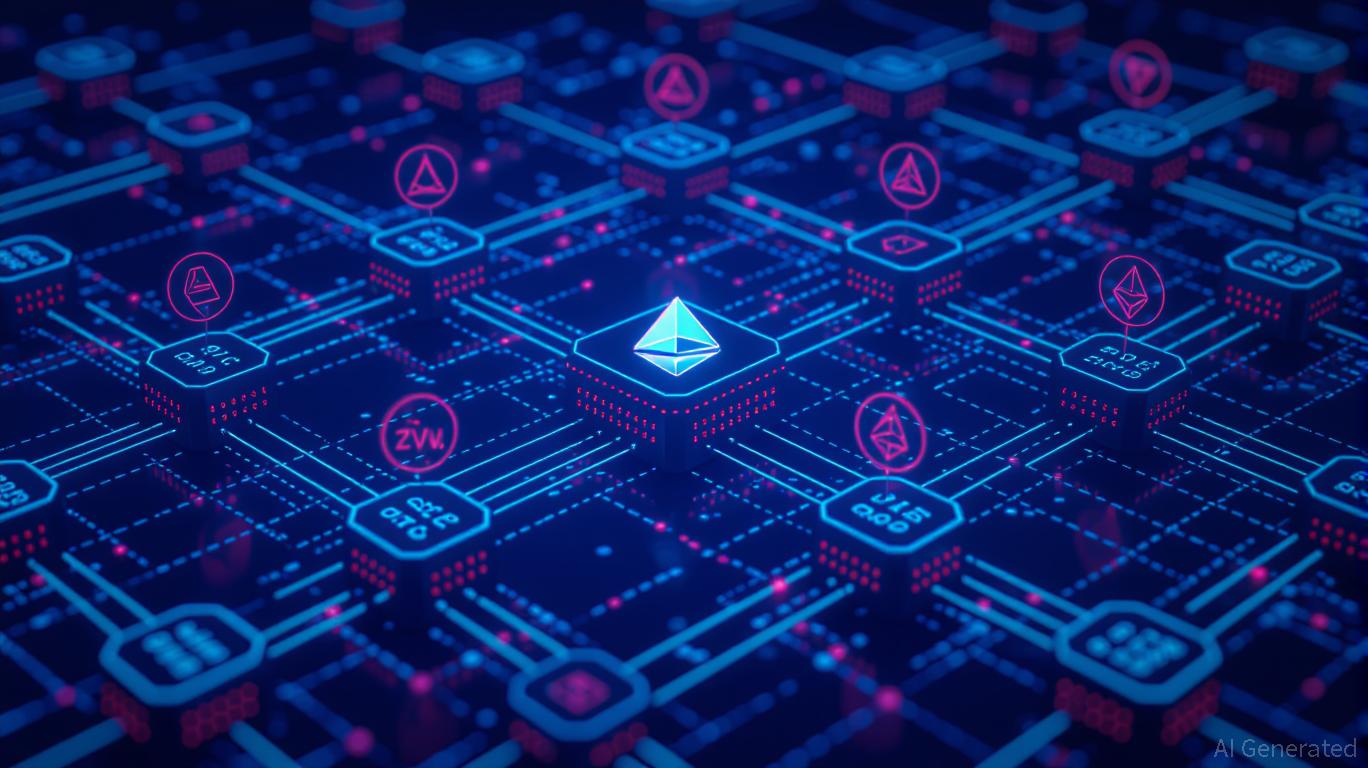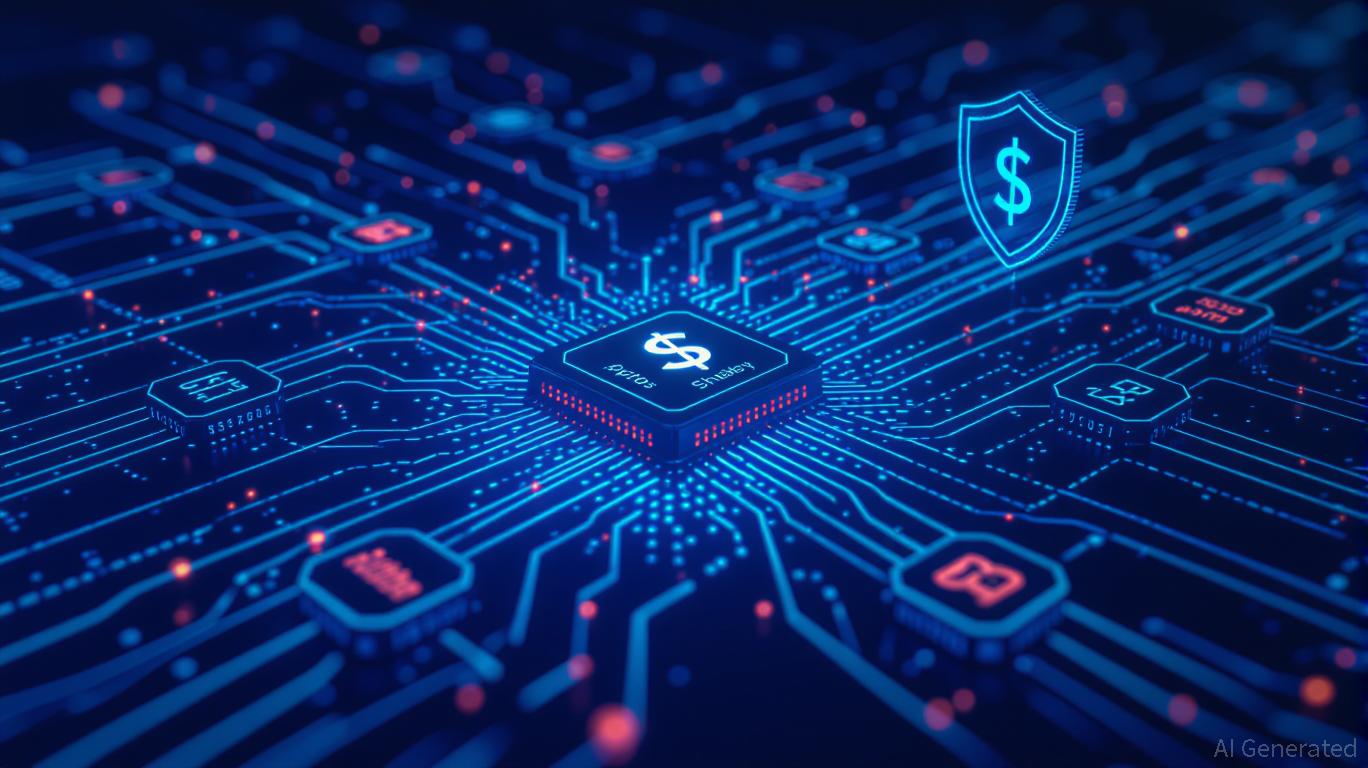ZK Atlas Enhancement: Driving Blockchain Expansion and Business Integration in 2025
- ZKsync's 2025 Atlas Upgrade introduces a high-performance ZK stack with 15,000+ TPS, redefining blockchain scalability through modular Layer 2/3 infrastructure. - The upgrade enables bridge-free Ethereum interoperability and supports EVM/RISC-V/WASM compatibility, addressing enterprise needs for hybrid blockchain solutions. - Institutional adoption surges with ZK token's 50% price jump and $19M+ partnerships, though legacy system integration and regulatory clarity remain key challenges. - BaaS compatibil
Scalability Reimagined: ZK Atlas’s Technical Innovations
Fundamentally, the ZK Atlas Upgrade represents a major reengineering of ZKsync’s system. The rollout of a high-throughput sequencer that can handle over 15,000 transactions per second (TPS) directly confronts the throughput constraints seen in traditional Layer 1 blockchains such as
The ZKsync OS further strengthens this ecosystem by providing a modular and adaptable platform. With support for multiple execution environments—including Ethereum
Enterprise Integration: Connecting Innovation with Real-World Needs
For blockchain to become widely adopted by enterprises, it must overcome two main obstacles: liquidity fragmentation and interoperability. The ZK Atlas Upgrade addresses these by enabling seamless interoperability between Layer 2 networks and Ethereum’s mainnet, removing the need for centralized bridges that have historically posed security and liquidity risks, as explained in the Zeeve blog. By allowing Layer 2 networks to access Ethereum’s vast liquidity pool, ZKsync streamlines processes for businesses aiming to tokenize real-world assets (RWAs) or conduct cross-chain transactions, as highlighted in a
Interest from institutional players has already increased. The ZK token’s 50% price jump following the upgrade signals rising trust in ZKsync’s capabilities for enterprise use, while investments such as Grvt’s $19 million funding round demonstrate the platform’s attractiveness to venture capital and corporate partners, as reported in the Bitget report. Additionally, solutions like RedStone’s Credora platform—which delivers real-time risk analytics for DeFi protocols—meet institutional requirements for transparency and regulatory compliance, as noted in the Bitget report. Together, these developments help resolve a major challenge for adoption: the absence of strong governance and risk management systems in decentralized environments.

Obstacles and Future Prospects
Even with its advancements, the ZK Atlas Upgrade does not resolve every challenge to enterprise blockchain adoption. Integrating with existing IT infrastructure remains a complicated and expensive process, especially in sectors like healthcare and manufacturing where data silos are prevalent, as discussed in a
Nevertheless, the upgrade’s modular approach and compatibility with Blockchain-as-a-Service (BaaS) platforms—using cloud services like AWS and Azure—provide a practical solution. By simplifying infrastructure management, these services allow companies to implement ZK-based applications without needing to completely overhaul their current technology, as described in the London Blockchain analysis. Moreover, the intersection of blockchain and AI is becoming increasingly important, with smart contracts automating governance for AI models and ensuring data transparency—an essential feature for industries such as finance and supply chain, as covered in the London Blockchain analysis.
Conclusion: A Strategic Investment Prospect
The ZK Atlas Upgrade stands as more than just a technical achievement; it represents a strategic shift toward a future where blockchain scalability and enterprise integration go hand in hand. By tackling issues of throughput, interoperability, and institutional trust, ZKsync has established itself as a key infrastructure provider for the next generation of decentralized technology. For investors, the upgrade’s value lies in its ability to attract enterprise users and institutional funding—a trend already visible through token price growth and new partnerships.
As blockchain technology evolves, those projects that successfully connect innovative solutions with practical, real-world applications will lead the market. The ZK Atlas Upgrade is a prime example of this philosophy, making a strong case for sustained investment in a rapidly expanding industry.
Disclaimer: The content of this article solely reflects the author's opinion and does not represent the platform in any capacity. This article is not intended to serve as a reference for making investment decisions.
You may also like
Vitalik Buterin Supports ZKsync: What This Means for Ethereum’s Development
- Vitalik Buterin endorsed ZKsync's Atlas upgrade, promising 15,000 TPS, 1-second finality, and near-zero fees for Ethereum scalability. - The upgrade enables direct L2-L1 connectivity, transforming Ethereum into a real-time liquidity hub for institutional and RWA applications. - ZK token surged 50% post-endorsement, highlighting market validation of scalability solutions aligned with Ethereum's decentralization goals. - Upcoming token unlocks from Linea, Aptos, and Avalanche may introduce volatility, emph

ZK Technology's Rapid Rise: How Zero-Knowledge Proofs Are Shaping Blockchain Investment Opportunities
- Aptos secures $120M Series B led by a16z/FTX to accelerate ZK-based infrastructure like Decibel DEX and Shelby storage. - ZK proofs address blockchain's privacy, efficiency gaps, with GKR reducing verification costs by 90% for enterprise use cases. - Strategic partnerships with WLFI (USD1 stablecoin) and exchanges like OKX expand institutional DeFi adoption and liquidity. - ZK's regulatory alignment via privacy-preserving AML frameworks attracts institutional investors amid evolving crypto compliance sta

Ireland Issues Landmark Fine for Crypto AML, Indicating Tighter Regulatory Scrutiny
- Ireland's Central Bank fined Coinbase Europe €21.5M for systemic AML/CFT failures between 2021-2025, marking its first crypto disciplinary action. - Technical errors allowed 31% of Coinbase's €176B transactions to bypass monitoring, exposing risks for money laundering and cybercrime. - The 30% reduced penalty under a settlement program highlights Europe's intensified crypto regulation, with Coinbase now enhancing monitoring protocols. - Regulators emphasized the need for real-time AML controls in crypto,

Bitcoin Latest Updates: The Ideal Crypto Storm—Leverage, RSI, and $341 Million Liquidated in 24 Hours
- James Wynn's 40x BTC short position collapsed as Bitcoin surged past $106,000, wiping $100k+ from his account in 12 hours of rapid liquidations. - Crypto derivatives platforms recorded $341.85M in liquidations (74.7% from short positions) as Bitcoin reclaimed key technical levels and ETF inflows boosted demand. - A $131M BTC short faces liquidation risk if prices hit $111,770, highlighting systemic risks from over-leveraged bearish bets amid unexpected market reversals. - Analysts warn excessive leverage
